Miasma Theory
(Miasmon)
As I've just mentioned, despite the way that chapter 3 of MARDEK ended, no further chapters were released.
From what I could glean from his old website, not long after publishing chapter 3, he set out to create a new game called Alora Fane: Regression, set in a world entirely separate from that of his previous games. It would be another RPG like MARDEK, divided into five episodes, about the adventures of someone named Thymus.
Later in 2011, he would shift his focus to a less ambitious project, which would end up being the first of a total of three games (as of this writing) that would bear the Alora Fane label...another Pokemon clone!
In MARDEK, nearly all of the monsters that you fight are composed of an omnipresent material called miasma, which was introduced due to Cornwall's concern over the ubiquity of violence in RPGs. Obviously this doesn't apply to the very much human bandits and thugs that you tangle with on several occasions. This new game, Miasmon, explores this concept further.
It would have its first playable demo released in 2012. What I'm playing isn't the first version of this demo, however.
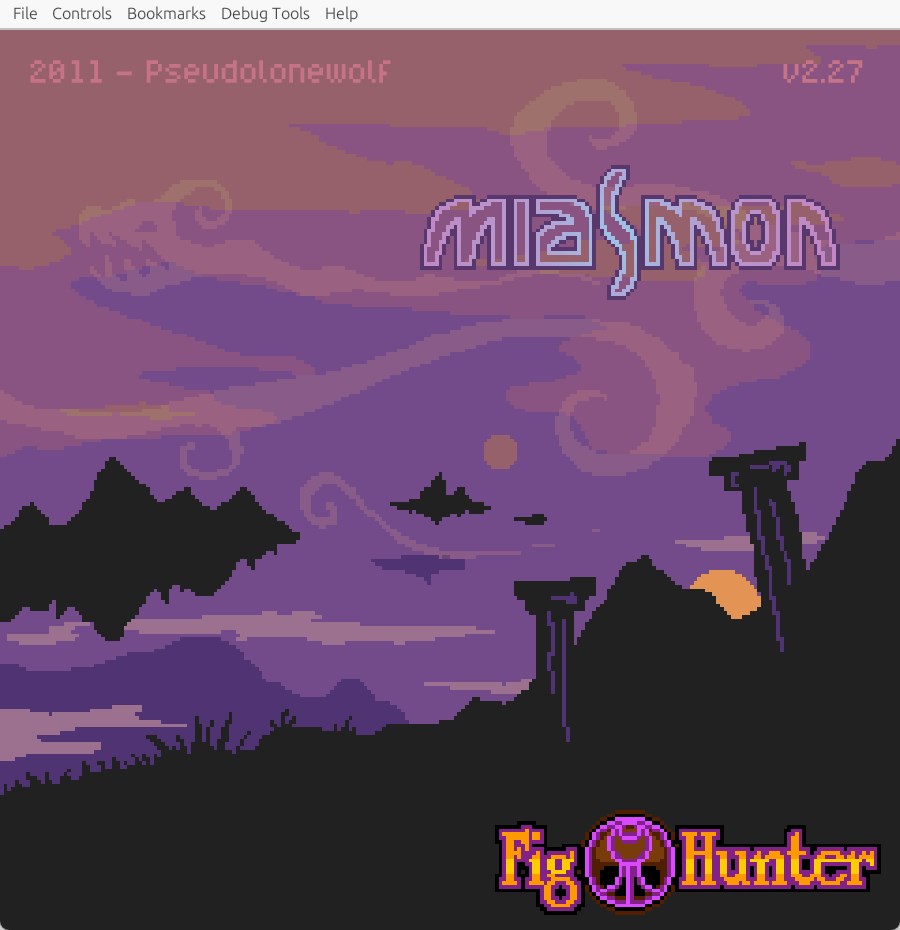
Just by looking at this title screen, you can tell that the art skills have vastly improved since the days of Deliverance and MARDEK. In fact, the art quality is more on par with Clarence's Big Chance than any of his previous RPGs.

You can select between two different protagonists, something that we haven't seen since Beast Signer. He did claim that he did so to avoid alienating his (relatively small) female fanbase.
Despite this, the storyline is very much the same. You are a member of the archeological group known as the Daring Delvers, out to uncover the mysteries behind the fractured realm of...Fracture, and its original inhabitants who were responsible for its destruction.
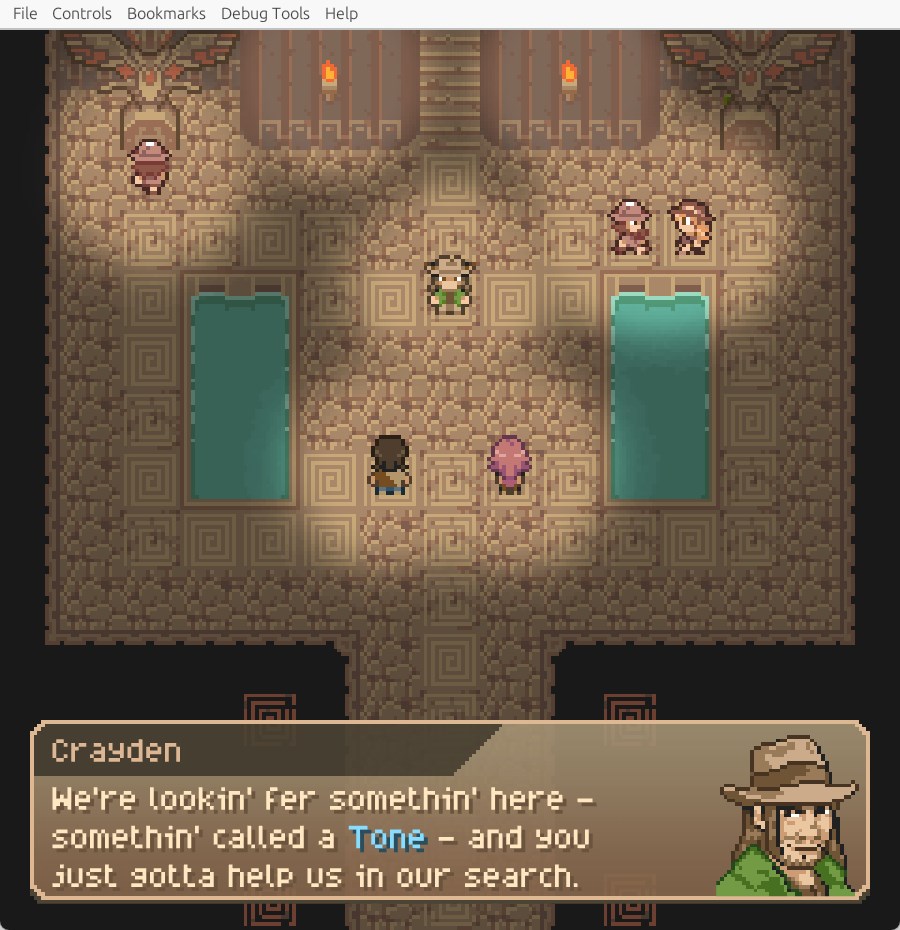
Unlike the rather sedate introductions to most Pokemon games, Miasmon starts you off right in the middle of the action, so to speak, with you starting out in the middle of an ancient ruin. It's something like starting the game in Mt. Moon rather than in Pallet Town.
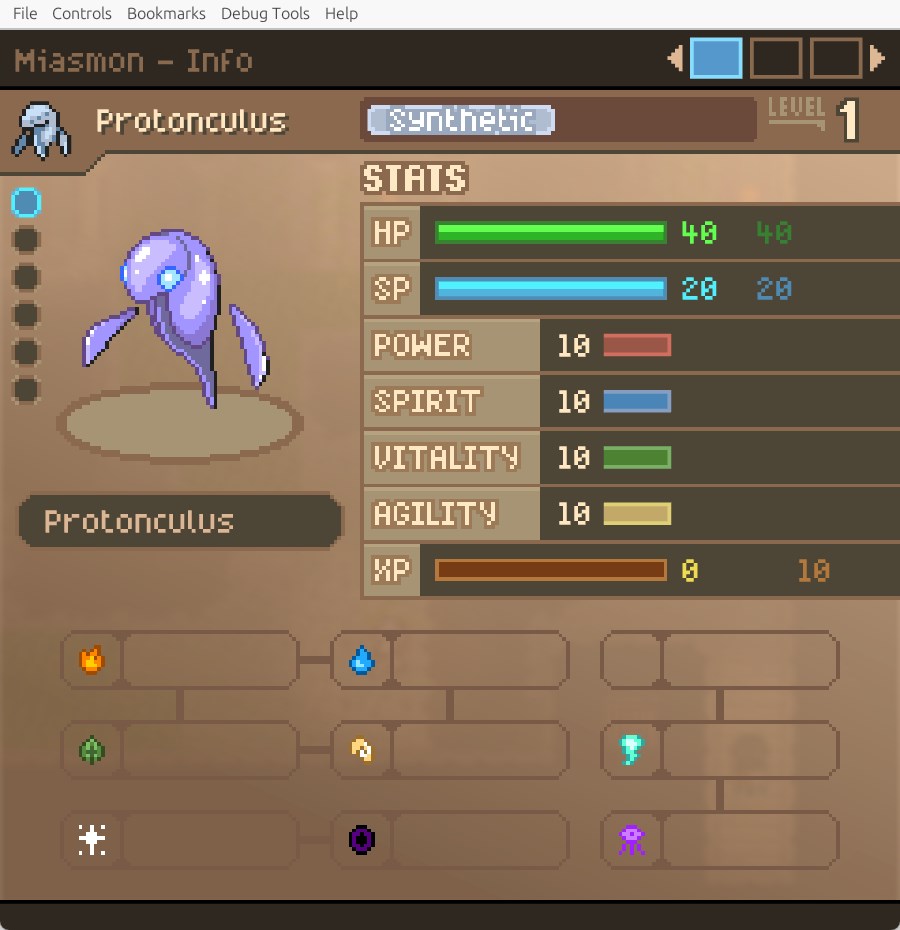
You even have a 'mon in your party right off the bat. While there is a professor figure in this game, he doesn't have any mons to hand out.
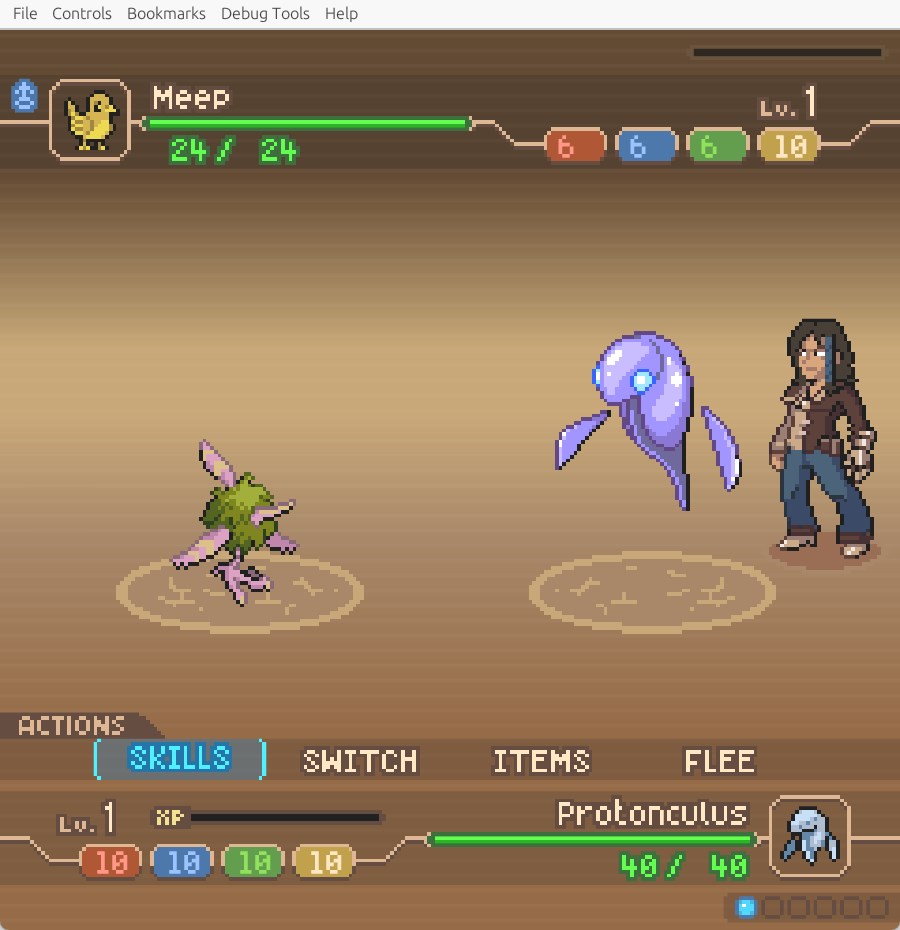
The combat? Well, it's nothing special. Unlike his last attempt at a monster-collecting RPG, this decides to just copy Pokemon's battle system wholesale; no stabbing enemy trainers with swords this time around. Well, almost wholesale: the most noticable difference here is that you can see both your and your opponent's stats in battle, rather than having to dive into the status menu to find out your mons' stats, which tell you very little about how effective they are. Plus, in a move inspired by D&D, your stats start at around 10 on average, and appear to cap at 20 or slightly more.
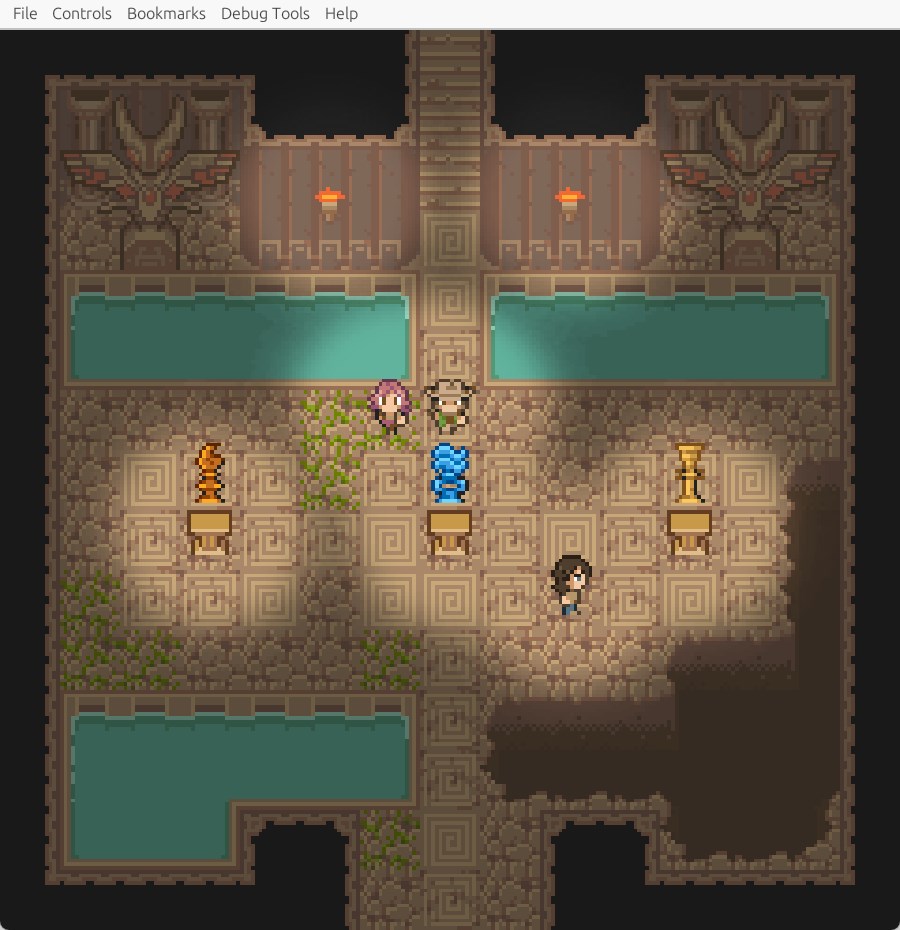
In lieu of selecting a starter 'mon (or taking a personality test to determine what you get), at the end of the starting area you select one of three elemental totems to rub against your single-celled organism's body to evolve it into a new elemental form.
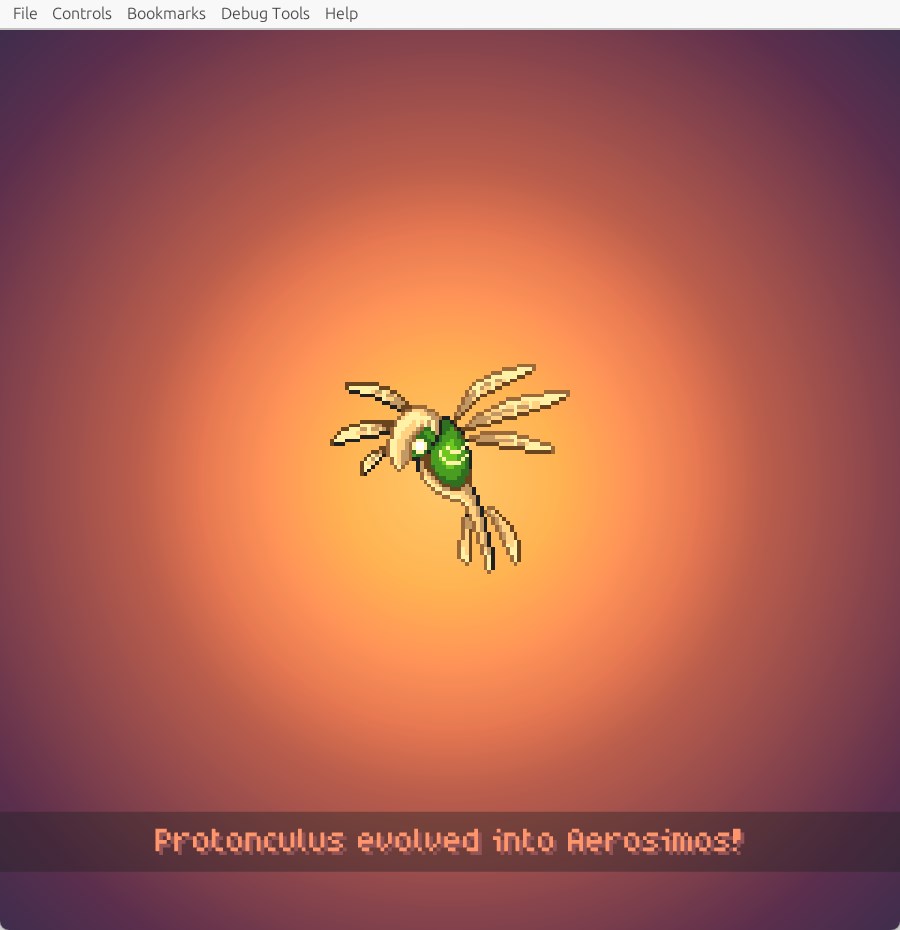
I pick the wind totem, because reasons.
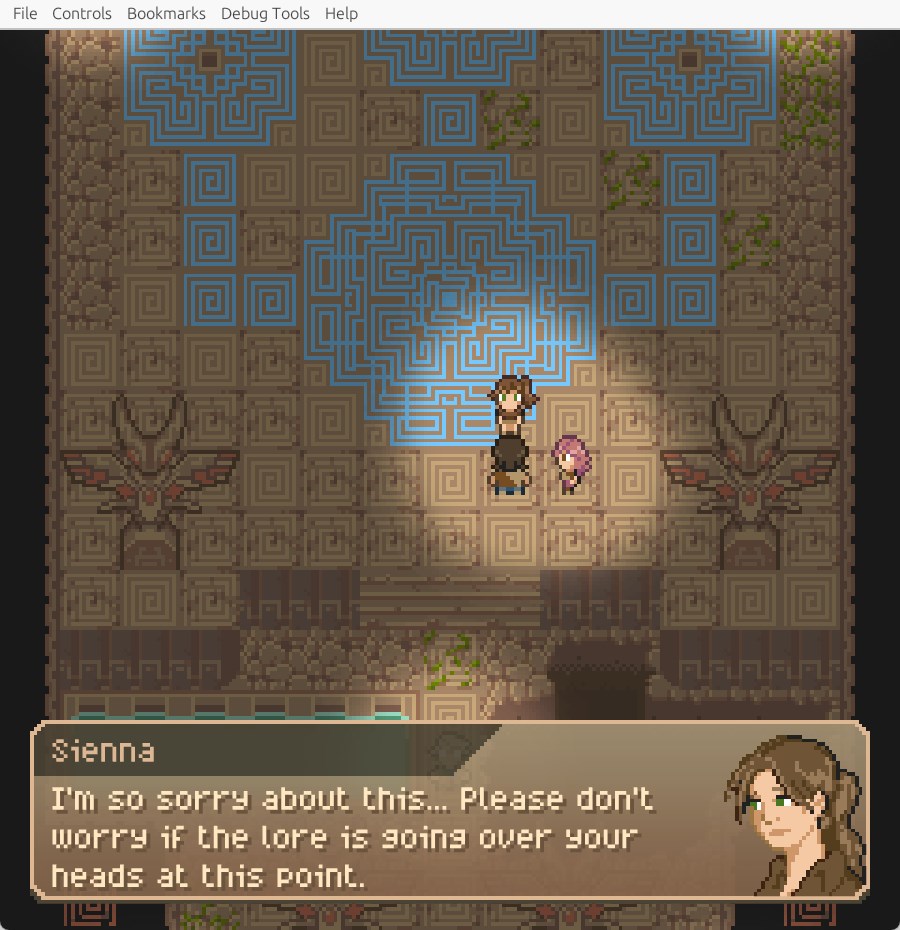
No, not really. In fact, it's actually pretty simple.
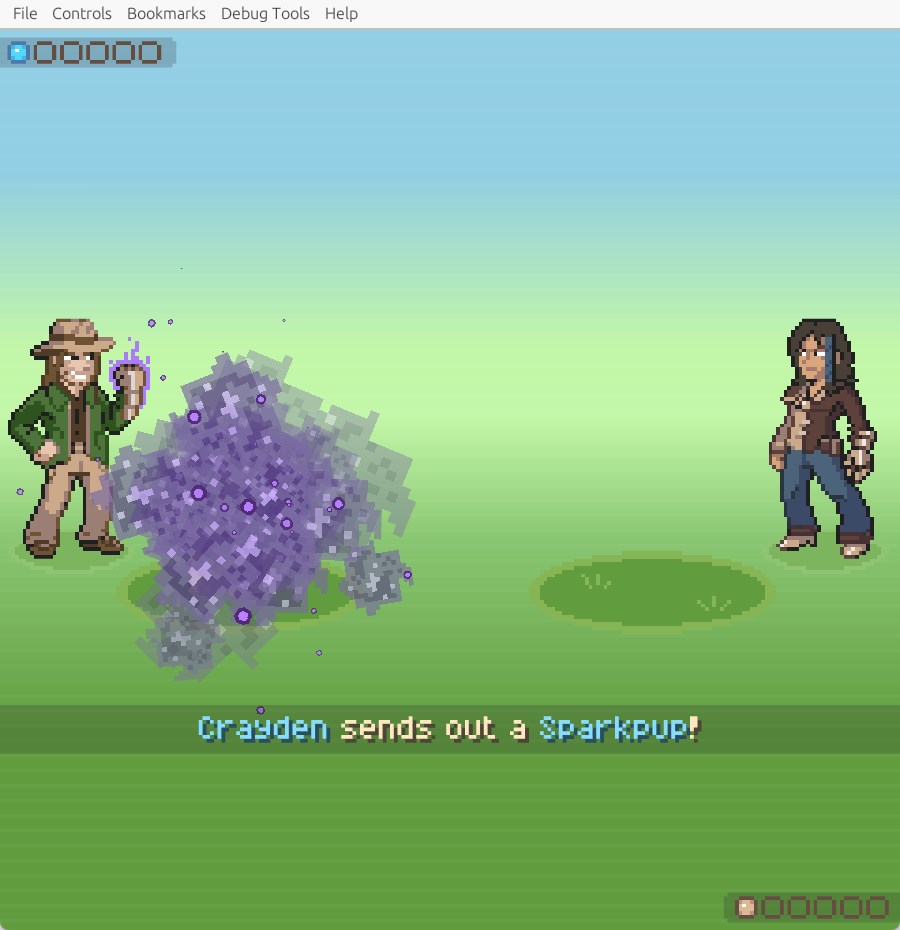
And right owhen you exit the ruins, you have your first trainer fight. They're exactly like in Pokemon, no need to explain any further.
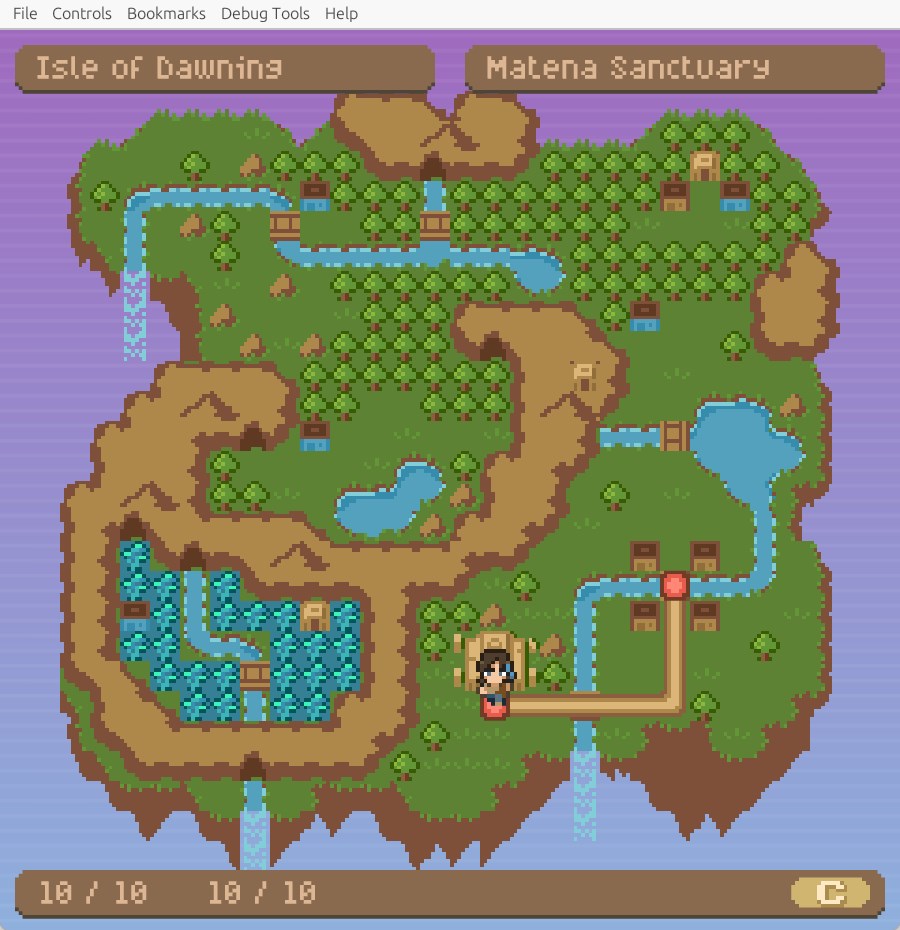
The presence of a world map, on the other hand, isn't.
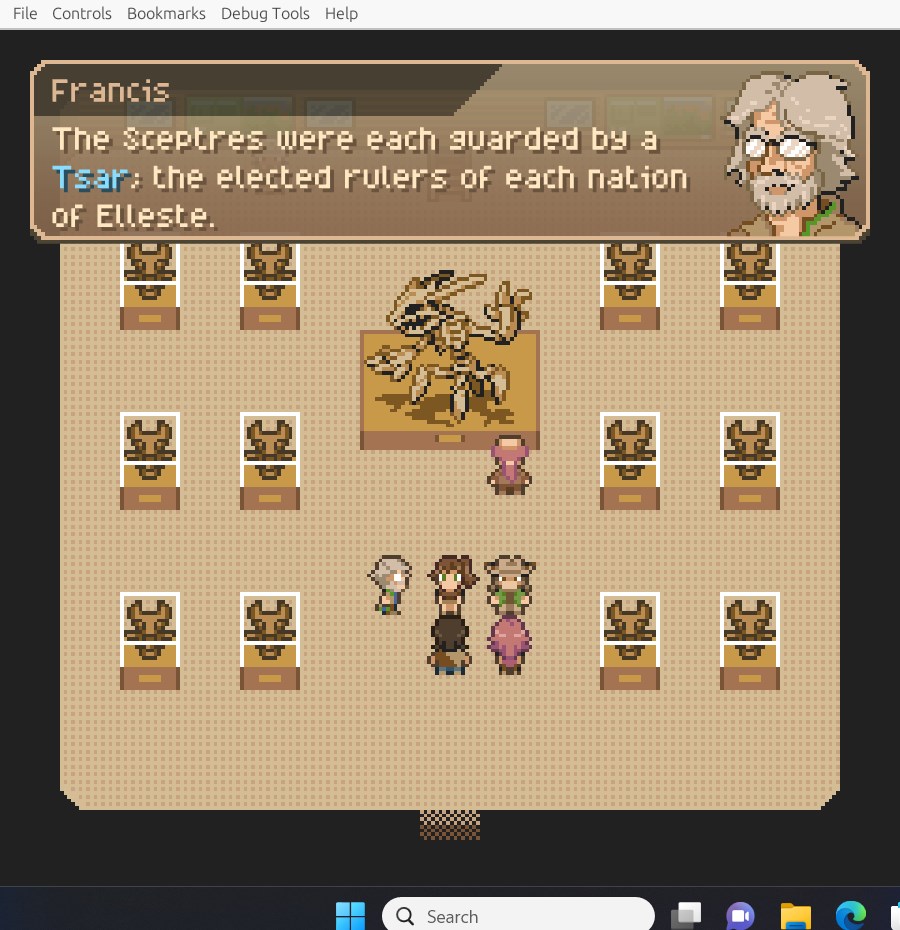
Up ahead's a town, because this fragment of a destroyed world is somehow capable of sustaining a permanent human settlement, with more really uncomplicated lore that boils down to "there are three magical gym badges artifacts hidden across the land, go get them."
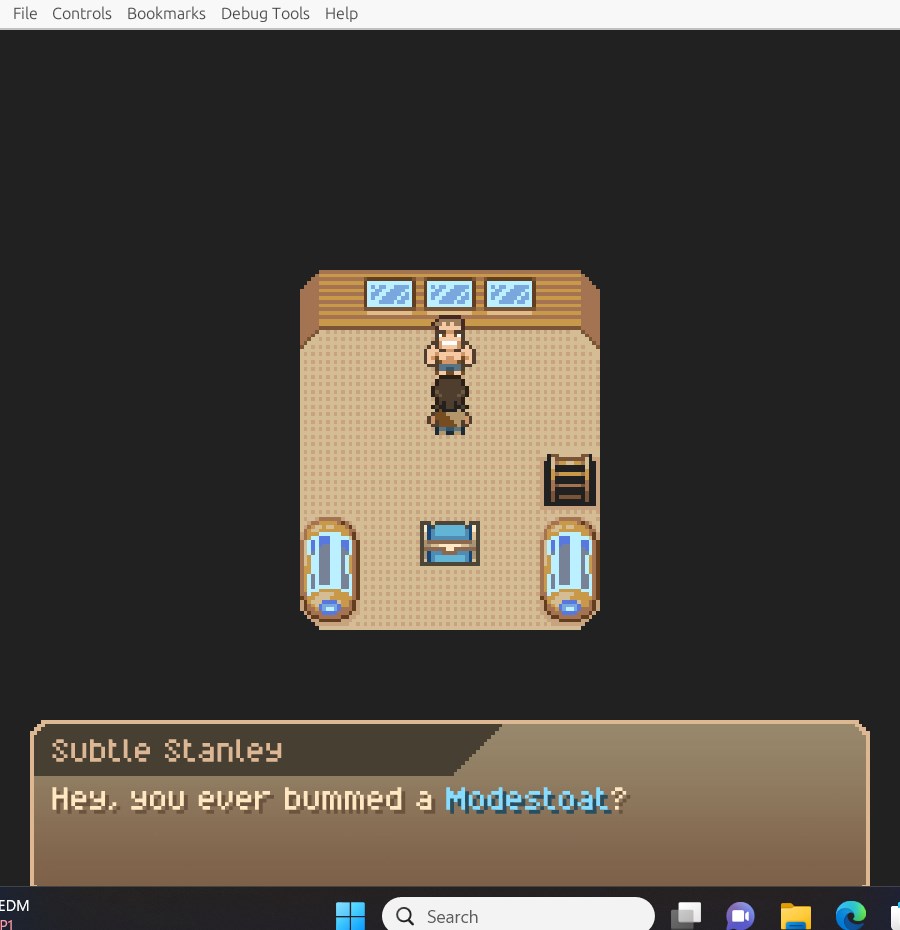
...Moving on.

Here's the other main difference between it and both Pokemon and Beast Signer. You can't just pick up new mons that you're fighting, oh no! First, you have to defeat a particular type of mon several times to fill up the miasma meter for its type. Once it's full, you go to the equivalent of a Pokemon Center, and pay a fee to produce a clone of said mon. You can even select its gender, though I'm not sure that it will be of much significance.
(Oh, and most of the monsters were cribbed directly from MARDEK)
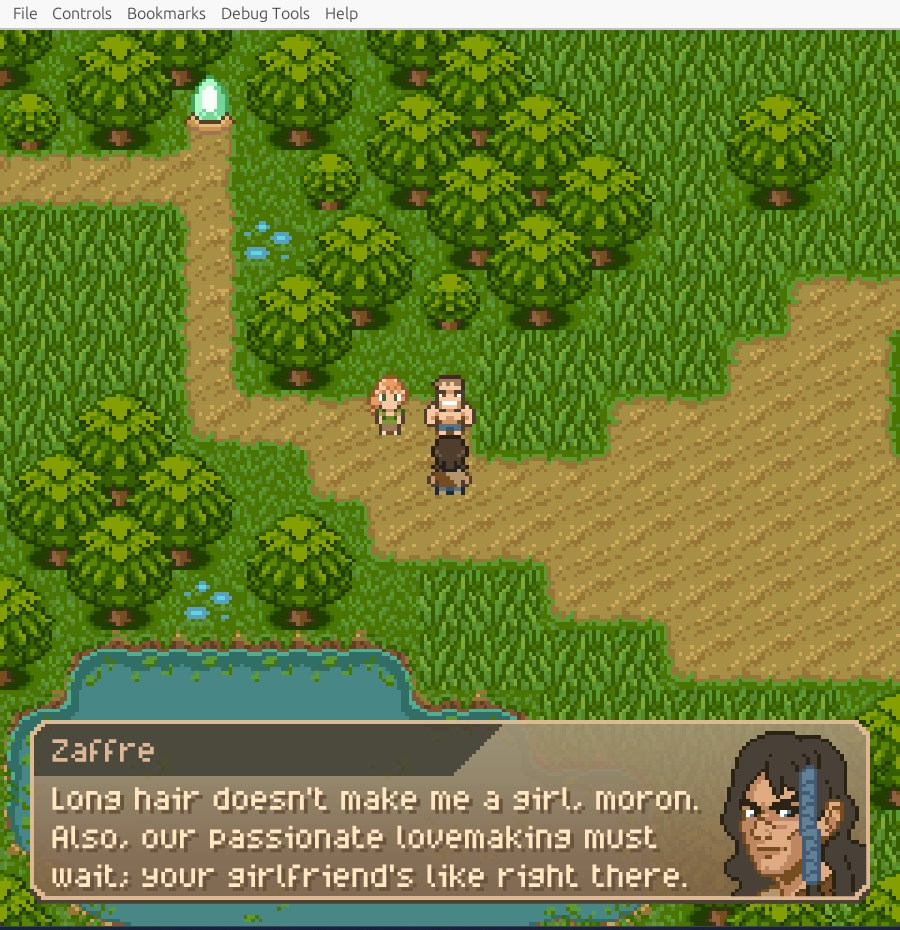
The route to the next area features a trainer who tries to mack on our long-haired, slightly effeminate hero. Now's a good chance to remind you that the two player characters you can select have their own distinct personalities. Zaffre, who we're playing as, is snarky, while Cerise, the girl, is kooky. That's it.
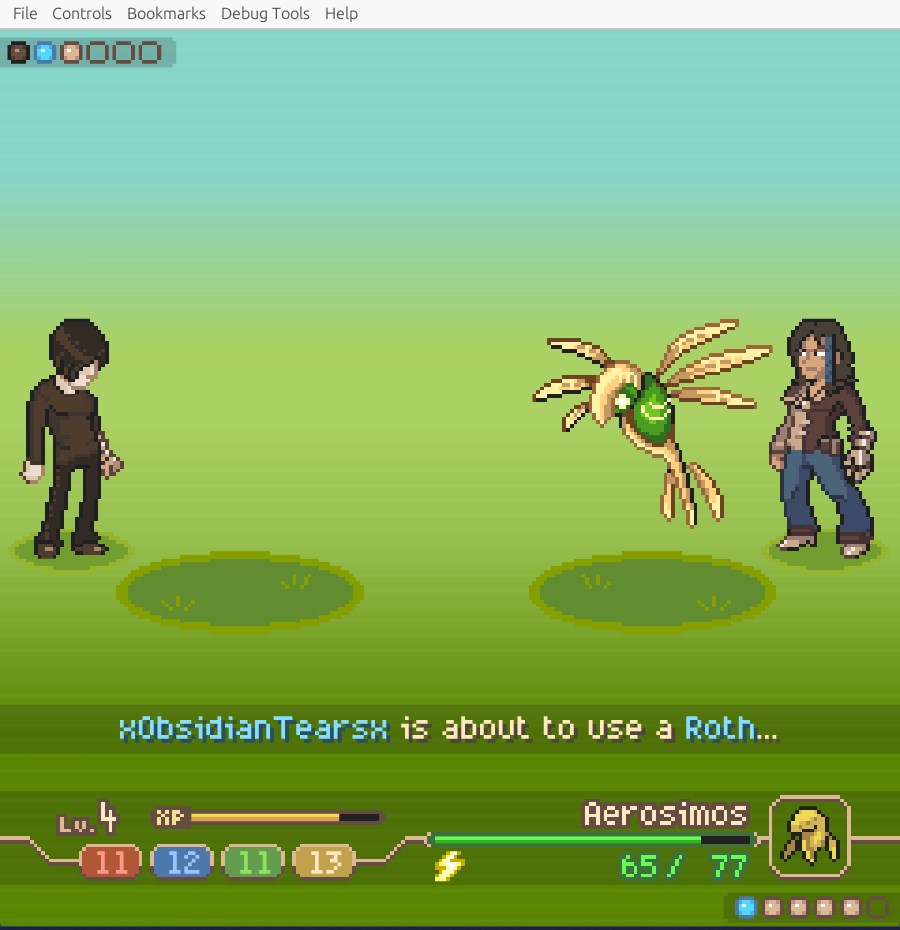
We also face a reminder that this was made in the early 2010s.
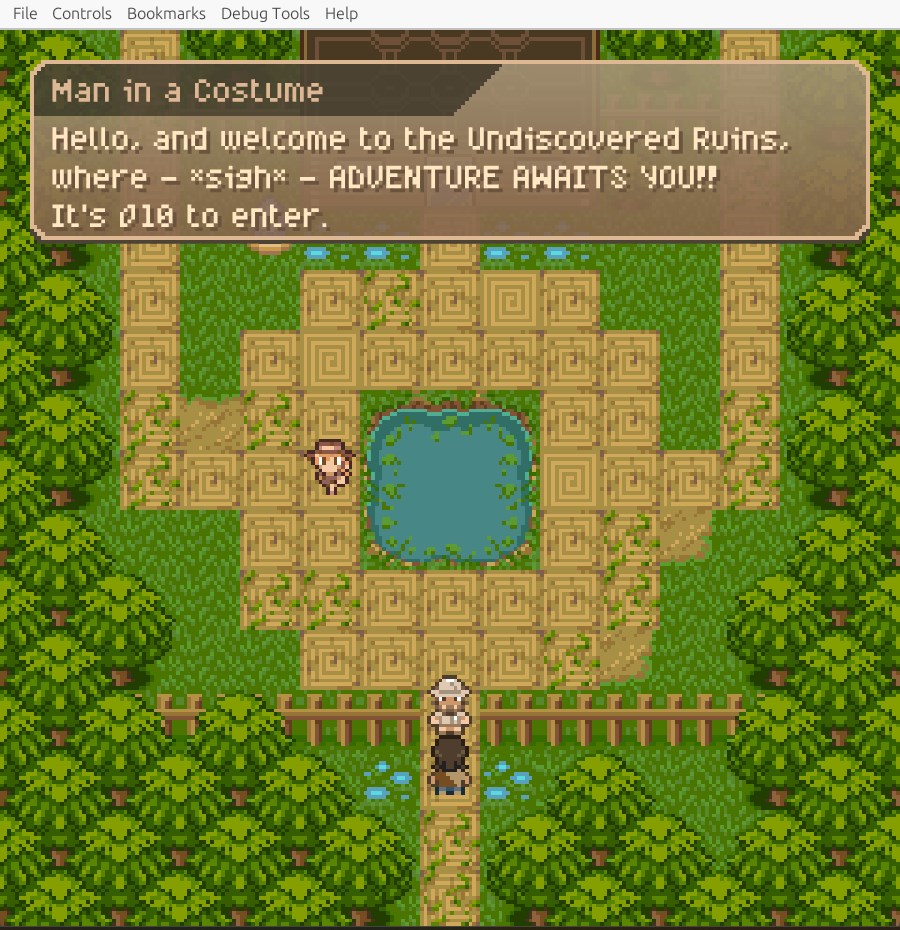
I kind of like the idea behind this. Going through a place that's presented as this ancient and untouched by modern man, only for it to be a bald-faced, cynical ploy to con starry-eyed adventurers out of their money.
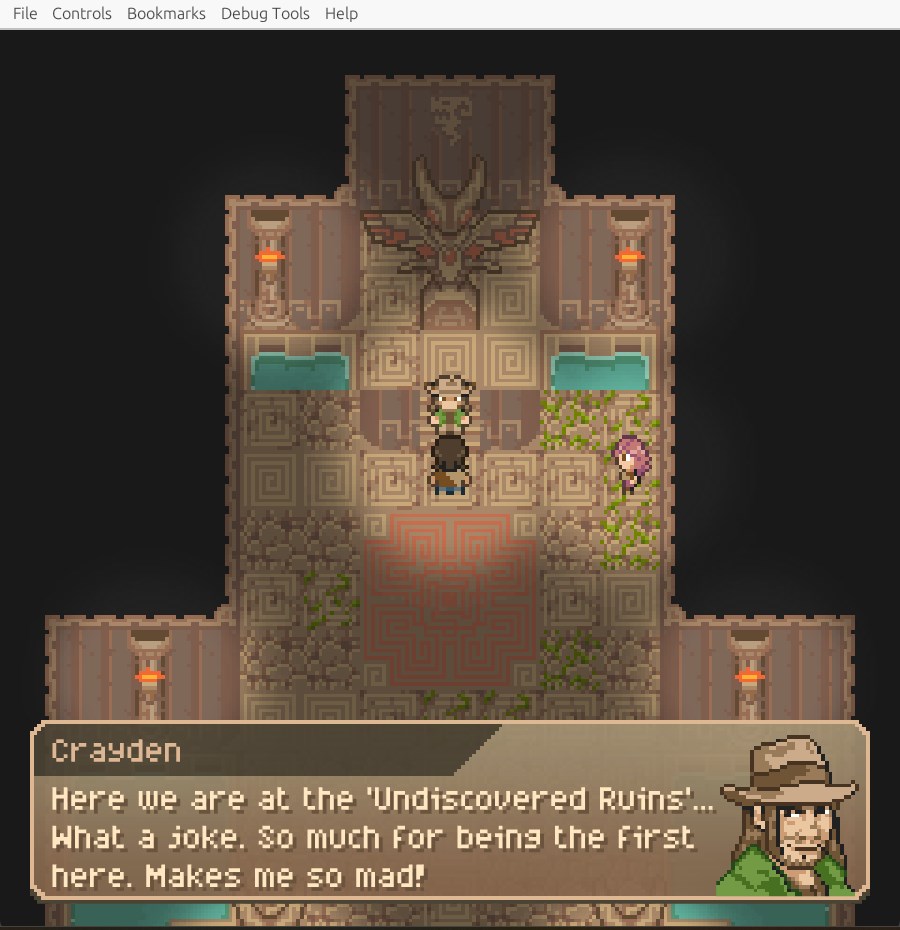
Of course, the game proceeds to ruin the joke by explaining it immediately afterwards.

And, despite appearances, there's some part of the ruin that is indeed relatively untouched, just on the other side of an easily accessible teleporter.
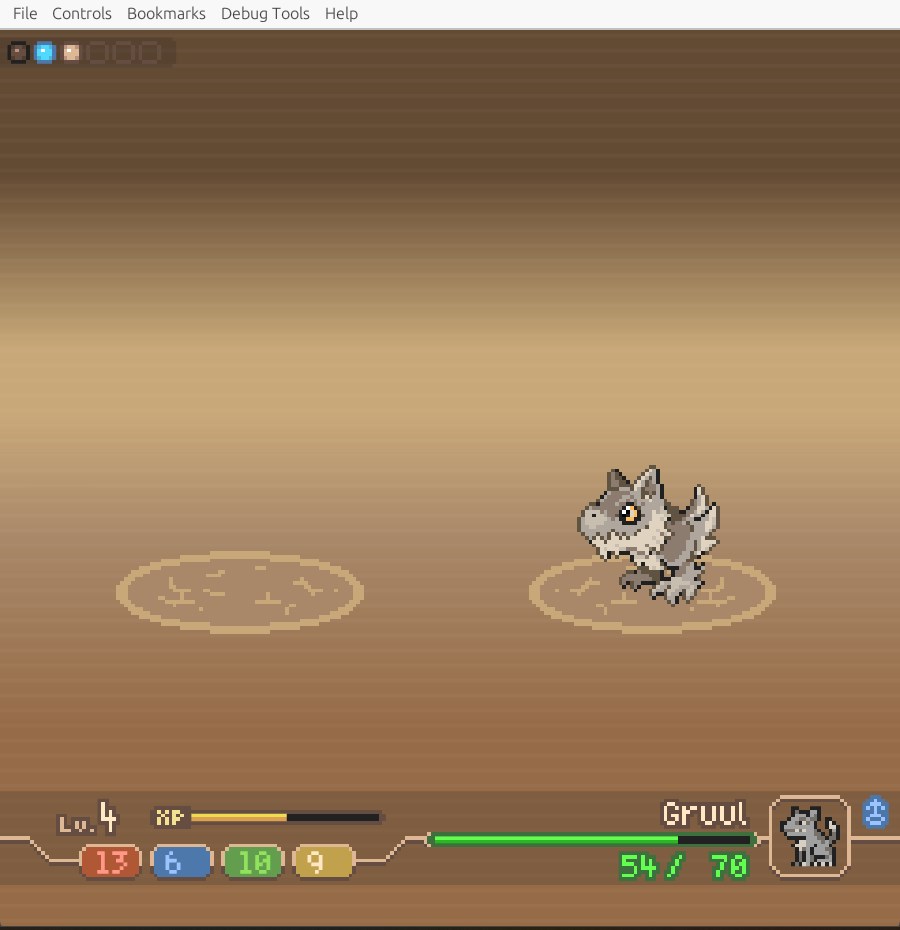
There's a gimmick here that's sort of interesting: at one point, you have to send out one of your mons to explore a section of the dungeon on its own. However, you do encounter something equivalent to the trainer battles, it's just several monsters emerging from the miasma one after another.
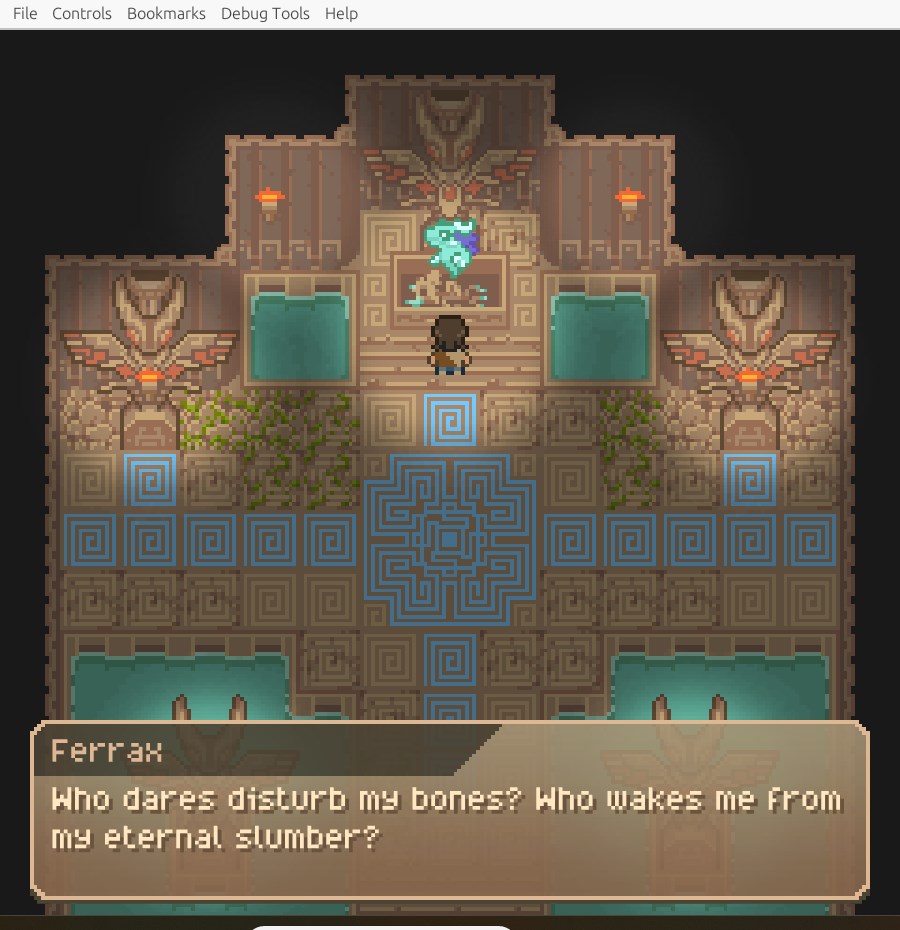
It's a rather brief interlude, and eventually, you have to go back to your trainer's team, and fight the boss of the dungeon, some kind of undead mummy.
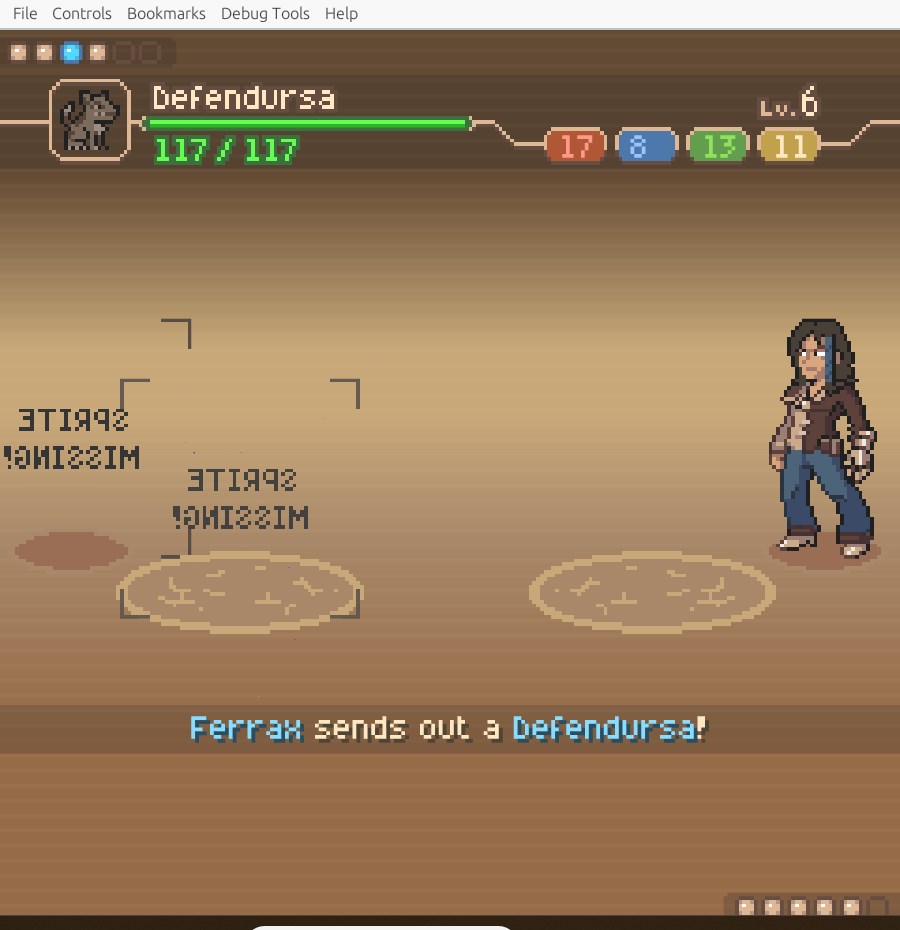
Unfortunately, Cornwall didn't implement the graphics for him or any of his mons. Also, while some of the trainer battles in Pokemon had some pretty ridiculous circumstances behind them, I don't think they can beat someone who has been dead for an untold amount of time obliging to face you in a magical cockfight.
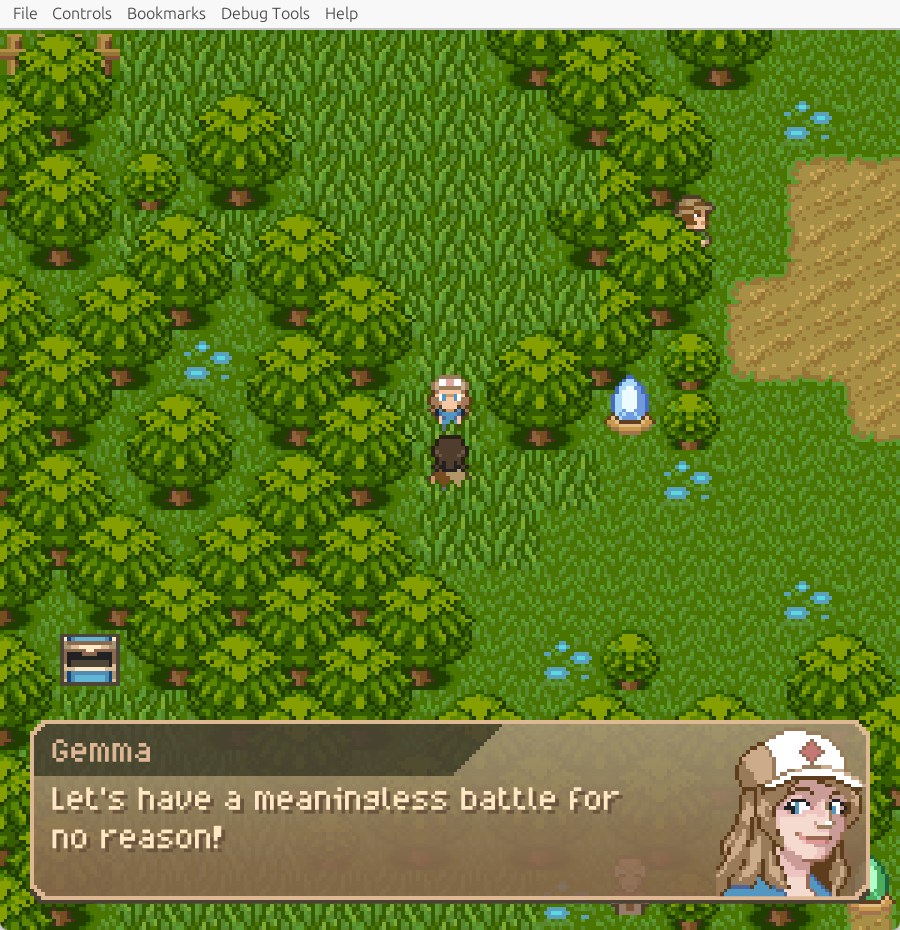
No mystical MacGuffin scepter here, unfortunately, so it's off to the not-Viridian Forest! It's a lot like its counterpart in Beast Signer; bug mons, and hard to avoid trainer battles, but that's not all, there's also a trainer battle with what I think is one of the other Delvers. I'm not sure if she was properly introduced.
That's not the end of it, though, as past her is more woods that look exactly like the woods you just went through. This is getting to be so drawn out that it feels like a bad joke.
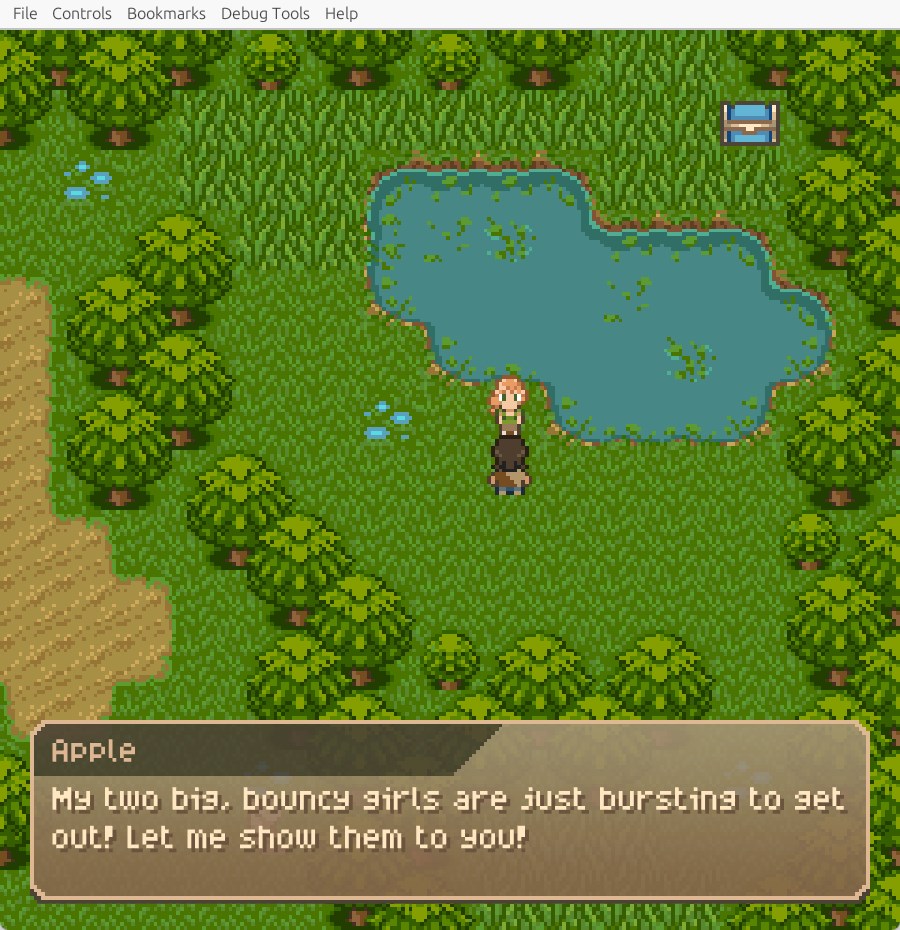
An out of context sex joke. I was kind of missing those.
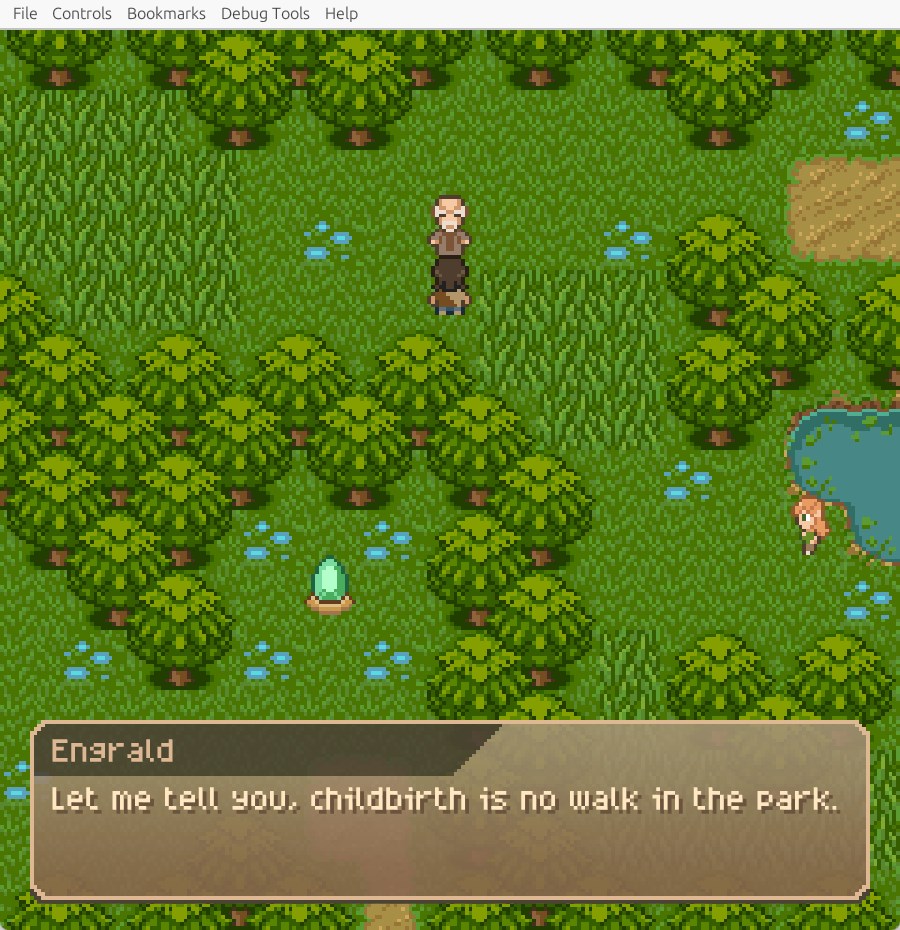
And male pregnancy, for whatever reason. Yes, I get it, the 2000s, no wait 2010s, "lol random" and all that, but this just isn't funny at all.
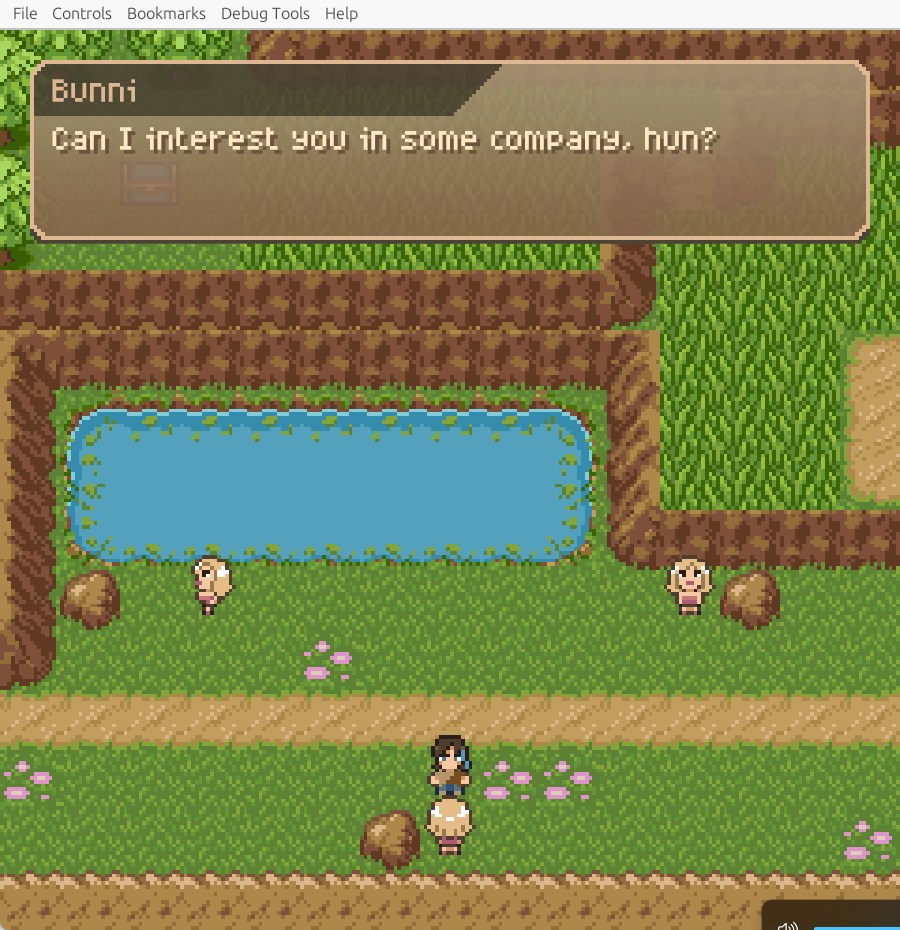
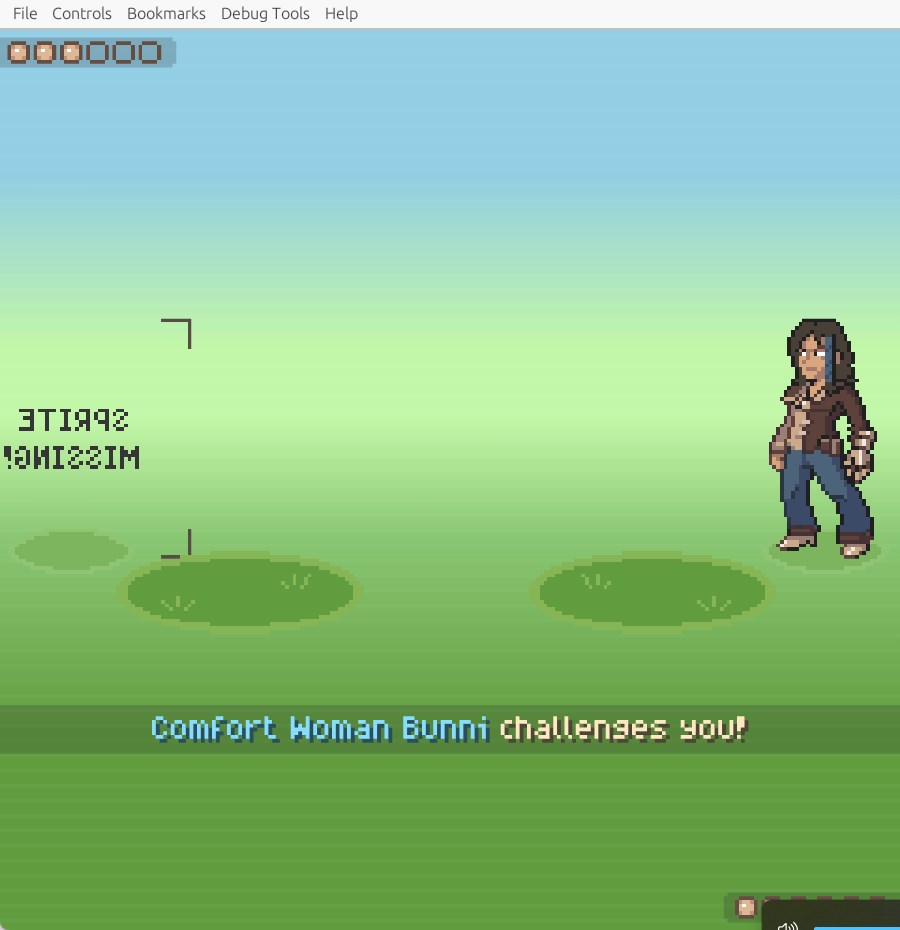
..."Comfort woman?" Of all the names that you could come up with for this trainer class, you picked one that calls to mind institutionalized wartime sexual exploitation carried out by an imperialist power! I've managed to tolerate this creator's low-effort sexual jokes so far, but this crosses one line too many.
Oh, and it turns out that they actually do want to just comfort you, as their name implies. For some reason, that just makes it even creepier. I guess it's for the best that she doesn't have a battle sprite.
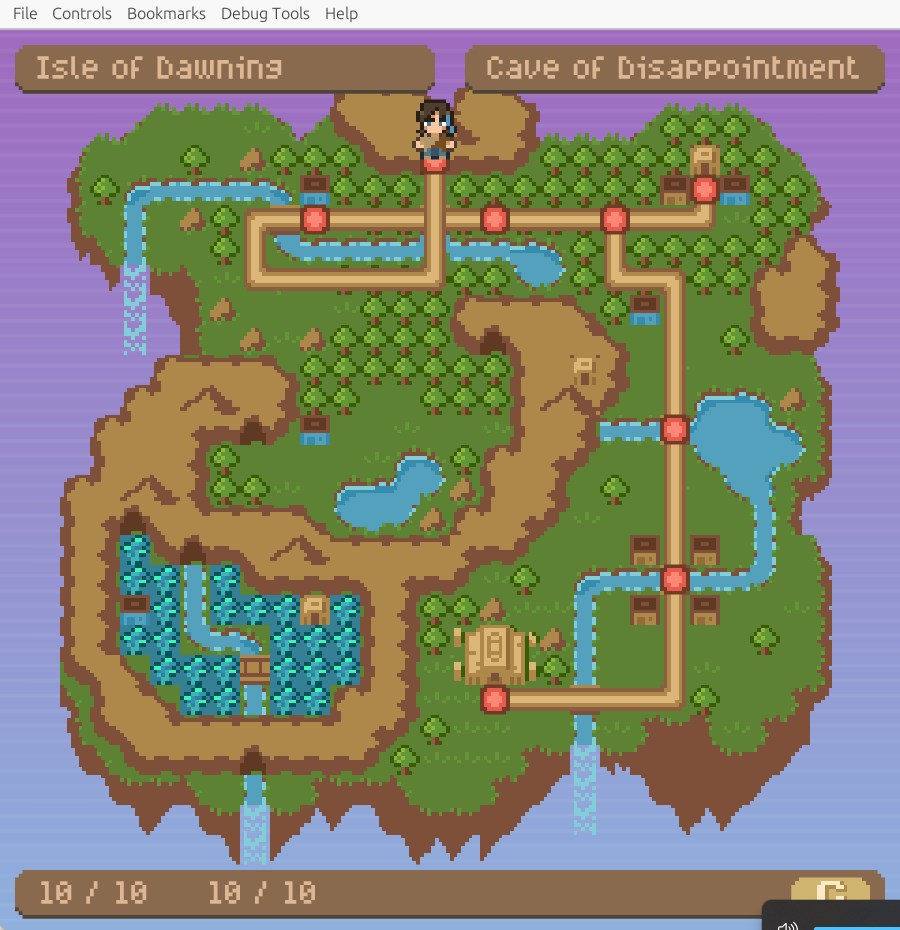
The Cave of Disappointment? What could possibly be more disappointing than making light of war crimes?
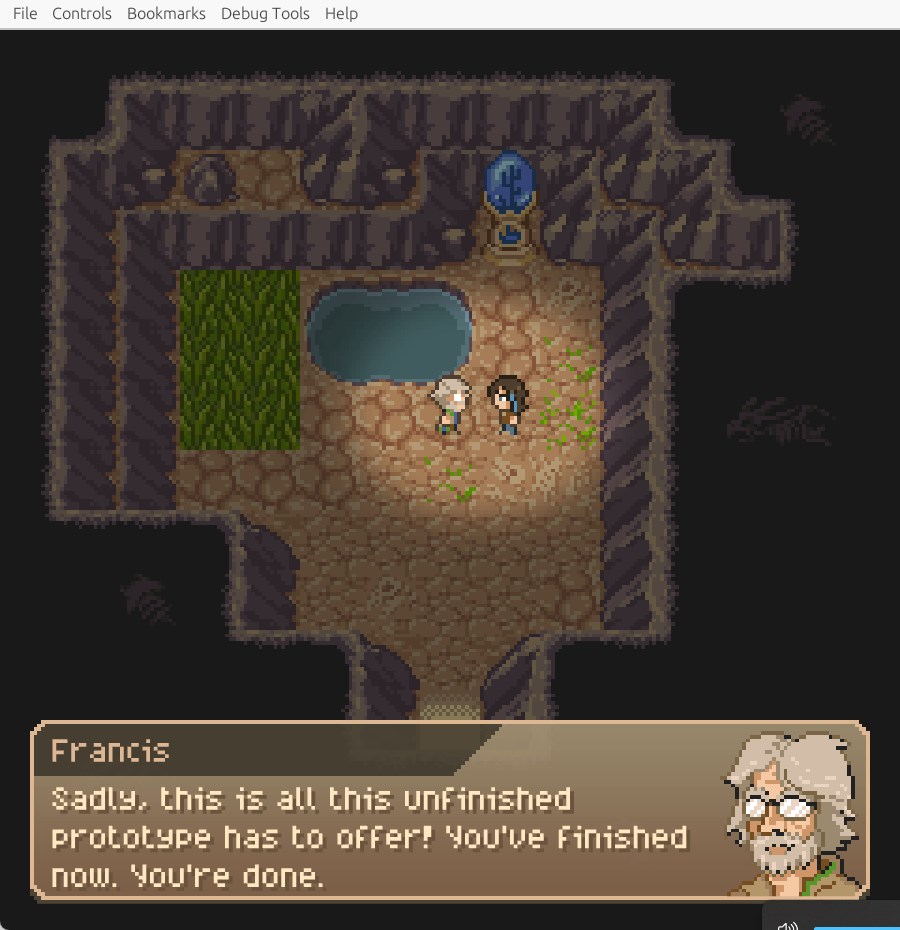
Oh right, just the end of the demo.

And a fight with the professor, because this demo is courteous enough to not leave you without a final boss fight.
Like with Beast Signer, although there is a definitive end to the demo (which would never see further development past that point), there's also a Pokemon-style gym in the demo's one and only town.

I forgot what the gym leader had going on, but I did manage to beat him. And that's all the content created for Miasmon.
While I applaud that Cornwall attempts here to set the game apart from both its inspiration and his previous games (notice how there was no mention of Yalort at all?) the experience still feels bogged down by its clumsy attempts at humor. While he's no stranger to sexual and fourth wall breaking jokes, here they come across as particularly desperate. And this is before we take into account the whole comfort woman thing.
While this game, as unfinished as it is, serves as an introduction to the new world that Cornwall has begun to create, it wasn't until later though that we discover the real Alora Fane.